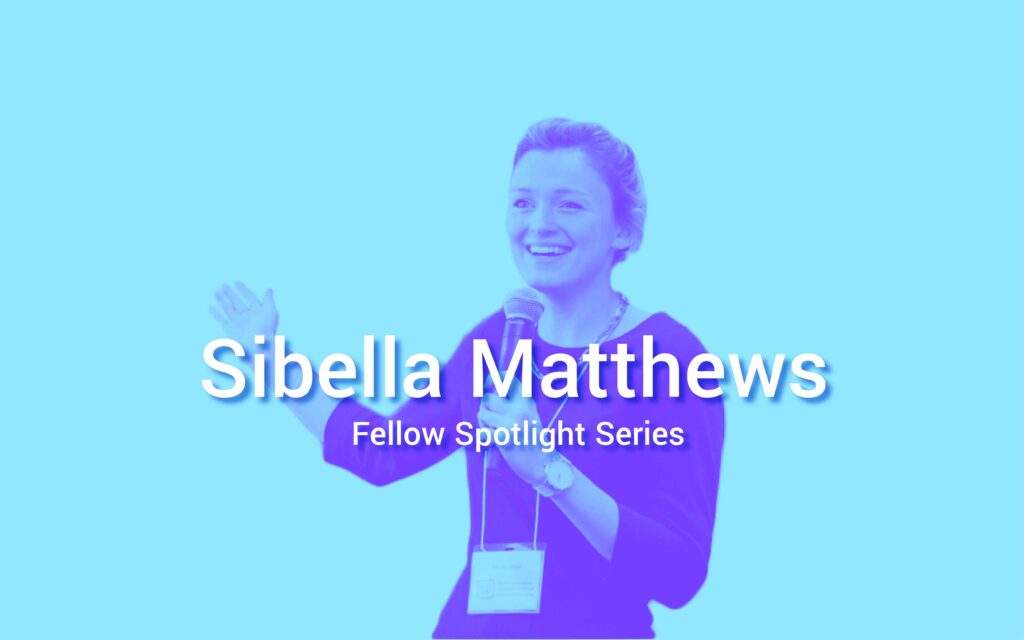Later this year, twenty-four individuals representing constituencies from across Australia will come together for the inaugural convention of the Girls Justice Reform Community. The coalition, a brainchild of Sibella Matthews (MPP ’18, Cheng Fellow), will meet quarterly with one objective: to end the incarceration of girls in Australia by 2025.
Matthews, who studied law with the intent to protect and advance human rights, joined the Royal Commission into Responses to Child Sexual Abuse as a legal officer after graduating from the University of Sydney. She became immersed in the stories of girls facing detention and began volunteering as a mentor at the Juniperina Juvenile Justice Center.
“I remember walking through the facility and being buzzed through the multiple security gates to get to the recreation room,” Matthews recalled. “We were told what we could and couldn’t say, what we could and couldn’t ask. I remember sitting down at a table and thinking about how many barriers the institution had placed on us to keep us from connecting as people who could trust each other.”
Her passion to affect change guided Matthews to positions with the Attorney General of New South Wales and a Federal Court judge. Researching policy and observing defendants in arduous trials, she witnessed the high investment of the judicial process to keep one girl out of detention while little to none of the work rippled out as systemic change.
I remember sitting down at a table and thinking about how many barriers the institution had placed on us to keep us from connecting as people who could trust each other.
“I had the legal skills, but I didn’t know how to use those tools in a systematic way,” Matthews described her impetus for attending the Kennedy School. “I thought combining my training as a lawyer with the knowledge to use data and develop policy would allow me to make a strong case regarding why girls should not be in detention.”
After a year of study in the Public Policy program, however, Matthews wanted a collaborative community and more structure to scaffold a response to girls facing detention. An email encouraging applications to the Cheng Fellowship presented a unique opportunity to cultivate a plan for social change with a cohort of likeminded peers and mentors.
Matthews first challenge as a Fellow was finding data pertinent to the issue. “In Australia there is a massive vacuum regarding girls in juvenile justice. When I reviewed reports from states and territories, there was very little on girls. It was like they were an invisible population.”
Her persistence conducting research yielded alarming results. On any given day, nearly 100 girls are in detention facilities across Australia. Three quarters of them have not even been sentenced for a crime, and in many cases the girls are detained for nonviolent offenses, such as property damage, that pose minimal threat to public safety. Eighty percent of the girls in detention report experiencing childhood abuse or trauma, and 92 percent have been diagnosed with two or more physiological disorders.
“Many of the pathways for girls into the juvenile justice system, I think it is safe to say, are driven by trauma, abuse, and neglect,” Matthews said. “The system failed these girls long before they failed the system.”
Matthews’s research also revealed grave concerns regarding the incarceration of Aboriginal and Torres Strait Islander girls. While six percent of Australia’s youth population, these groups make up 57 percent of the girls in detention facilities. “The connection to country is integral to Aboriginal people, so taking people from their land is far more punitive than non-Aboriginal people can really contemplate. And while this overrepresentation is occurring, many studies show that there is lack of cultural training for the staff in detention facilities.”
Many of the pathways for girls into the juvenile justice system, I think it is safe to say, are driven by trauma, abuse, and neglect. The system failed these girls long before they failed the system.
Matthews began developing a matrix of strategic actions to promote change. She hypothesized how to leverage her skills and credibility to influence the problem with which she had become so familiar. Matthews’s first iteration was a plan to open a facility that provided alternatives to incarceration. She quickly realized through the Fellowship’s Tuesday evening seminars that the resources needed proved to be insurmountable obstacles at the time. She then considered starting an advocacy organization, but multiple groups lobbying for incarcerated women and youth in Australia crowded this landscape.
Evaluating her options, Matthews decided to pursue the Girls Justice Reform Community after observing the Emerging Adult Justice Learning Community at Harvard during which researchers, practitioners, policy makers, and advocates discussed ways to achieve developmentally-appropriate, equitable outcomes for young adults in the criminal justice system. She saw the participants’ energy as they became the agents of change in their own communities and realized that she was well positioned to bring Australia’s key actors on the issue of girls’ incarceration into one room.
The individuals committing to the Girls Justice Reform Community represent every state and territory in Australia, as well as every level of the justice system from police officers and correctional staff to judges and social workers. According to Matthews though, “The most important participants are system involved girls, formerly incarcerated girls, and their families. Far too often during these reform efforts, you have government officials and advocates calling for various reforms, but those spaces and platforms should be for these girls to use their voices, particularly because they are already marginalized.”
As for the most important thing she gained during the Cheng Fellowship, Matthews said it was confidence. “When I started the Cheng Fellowship, I wrote that I did not have a credible voice in the space. While I still may not be the best voice on the issue or be the most experienced person, I realized something would be lost if I didn’t participate. I was encouraged to jump in. I had a supportive network, which made these ideas of social innovation less scary.”

